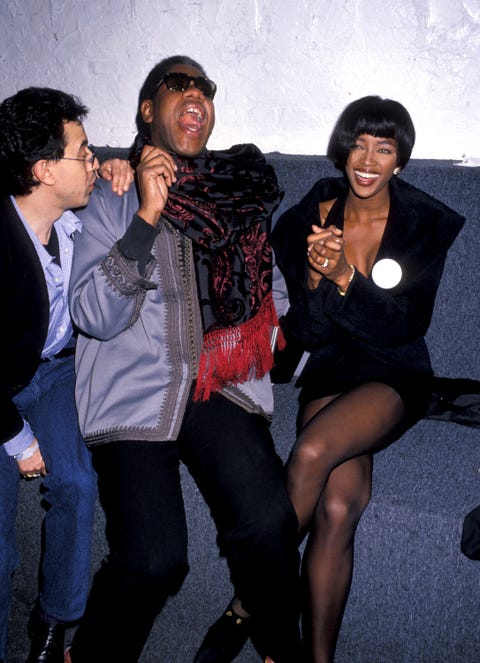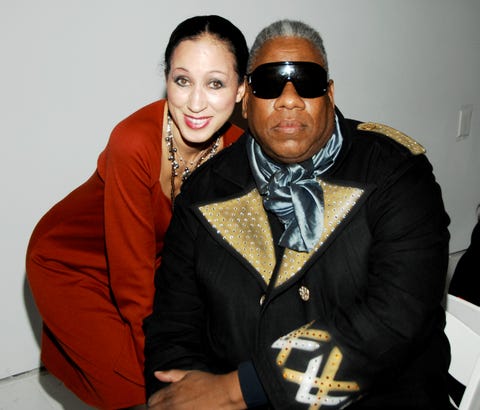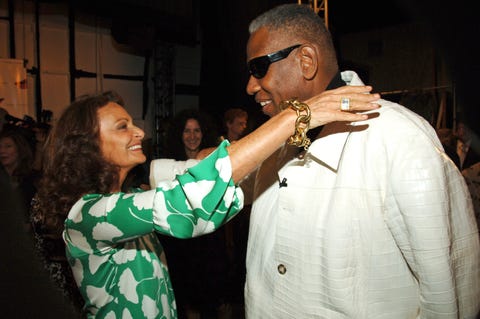Style Points is a weekly column about how fashion intersects with the wider world.
What you need to know about André Leon Talley is that he contained multitudes. He was as comfortable front row at a couture show as he was on the couch at Watch What Happens Live, as at home in the white-hot center of a party as he was in his actual home, surrounded by his books. He could go from holding forth on some arcane point of art history or French court life or the world of long-past socialite swans to segueing seamlessly into lighthearted gossip.
Everyone belonged in his world, and he championed people whose greatness fashion didn’t always recognize in time. When the industry was at its most exclusive, the legendary journalist, who passed away yesterday at 73, was a conduit to those who felt like outsiders, a talent-seeking missile who stayed loyal to those he supported, in particular when it came to advocating for Black designers and models. When you look at images of him, he’s usually throwing his head back laughing or embracing everyone in his general vicinity, pulling everyone together. That was exactly who he was.
The world probably knew him best through the monologue where he laments the “famine of beauty” afflicting the fashion world, and it’s not a bad summation of his approach to life. He needed even tiny things to sing with beauty, the kinds of elements most people might not even notice—for example, when he put together his Oscar de la Renta retrospective at the SCAD Museum of Art, he insisted the mannequins’ feet be decked out with ribbons. And when you walked into that exhibit, you were greeted with a wall of flowers; a harvest of almost obscene beauty.
But behind that obsession with surfaces, there was unacknowledged depth. And unacknowledged pain. It was there in the pages of his memoir, The Chiffon Trenches, where he wrote candidly about the exclusion and racism he’d faced in the industry, and in every frame of his documentary, The Gospel According to André. The joy wasn’t in any way a façade, but it sometimes hid the ruminative, introspective side of his personality. What he did in the face of those experiences, though, might have been the most important choice he made: he channeled his energy into supporting others, as though to ensure that the next generation wouldn’t face the obstacles he’d had to overcome.
The first time we spoke, I got a window into the way his mind worked. I was interviewing him for a fashion history project I was overseeing for New York magazine. The ostensible topic of conversation was John Galliano and the spring 1994 collection, known as the São Schlumberger show, that brought the designer back from the brink of bankruptcy when he was sleeping on the floor of his studio. Talley helped secure the venue from Schlumberger and got Manolo Blahnik to provide shoes. Kate Moss and Naomi Campbell signed on to walk gratis because they believed in the vision. It was a typical André moment: bring everyone together in the service of something beautiful.
As he resurfaced 20-year-old memories, those trademark digressions were already starting: he waxed poetic about going on McDonald’s runs and serving as an usher at the show. Then he wanted to know what else I’d be covering. I said I was working on a punk story, talk turned to Vivienne Westwood, and he said I ought to come down to Savannah, where he’d be presenting the designer with the Lifetime Achievement Award. The entire thing felt unreal, but there I was a few months later, on a stage asking the two of them questions, then out to dinner with the punk legend and the fashion eminence on a rowdy night where Miss J Alexander led us in a round of runway walks. (Impression included Naomi, Kate, and “Naomi when she has a plane to catch.”) A group of strangers had gelled together as a fashion family. I’d felt like an awkward, jagged puzzle piece, but suddenly I realized I fit in. A great editor knows how to put things together in precisely the right way—including people—just as Talley did that night.
This content is created and maintained by a third party, and imported onto this page to help users provide their email addresses. You may be able to find more information about this and similar content at piano.io




